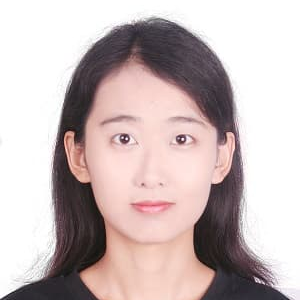Deep Learning in Remote Sensing Application
A special issue of Remote Sensing (ISSN 2072-4292). This special issue belongs to the section "Remote Sensing Image Processing".
Deadline for manuscript submissions: closed (31 December 2022) | Viewed by 39477
Special Issue Editors
Interests: remote sensing image understanding; computer vision; deep learning
Special Issues, Collections and Topics in MDPI journals
2. Remote Sensing Technology Institute (IMF), German Aerospace Center (DLR), Münchener Straße 20, 82234 Weßling, Germany
Interests: remote sensing; computer vision; machine/deep learning
Special Issues, Collections and Topics in MDPI journals
Interests: semi-supervised learning; hyperspectral analysis; street level analysis; deep learning; graph-based techniques
Interests: remote sensing image understanding; deep learning; land cover mapping; image super-resolution reconstruction
Interests: remote sensing image understanding; deep learning; high performance computing
Special Issues, Collections and Topics in MDPI journals
Special Issue Information
Dear Colleagues,
Remote sensing images have recorded various kinds of information on the earth surface for decades, which have been broadly applied to many crucial areas, e.g., urban planning, national security, agriculture, forestry, climate, hydrology, etc. It is important to extract essential information from the substantial amount of remote sensing images efficiently and accurately. Over the recent years, artificial intelligence, especially the deep learning technique, has had a significant effect on the remote sensing domain and shown great potential in land cover and land use mapping, crop monitoring, object detection, building and road extraction, change detection, super-resolution, and many other remote sensing applications. However, many challenges still exist due to the limited number of annotated datasets, the special characteristic of different sensors or data sources, the complexity and diversity of large-scale areas, and other specific problems in real-world applications. In this Special Issue, we expect new research progress and contributions for deep-learning-based remote sensing applications. We look forward to novel datasets, algorithm design, or application domains. The scope of this Special Issue includes but is not limited to:
- Image classification;
- Object detection;
- Semantic segmentation;
- Instance segmentation;
- Weakly supervised learning;
- Semi-supervised learning;
- Self-supervised learning;
- Unsupervised learning;
- Domain adaptation;
- Transfer learning;
- Novel datasets;
- Novel tasks/applications;
- 3D vision for monocular images;
- Multi-view stereo;
- Point cloud data;
- Change detection;
- Time-series data analysis;
- Multispectral or hyperspectral image analysis;
- Image super-resolution/restoration;
- Data Fusion;
- Multi-modal data analysis.
Dr. Weijia Li
Dr. Lichao Mou
Dr. Angelica I. Aviles-Rivero
Guest Editors
Runmin Dong
Juepeng Zheng
Guest Editor Assistants
Manuscript Submission Information
Manuscripts should be submitted online at www.mdpi.com by registering and logging in to this website. Once you are registered, click here to go to the submission form. Manuscripts can be submitted until the deadline. All submissions that pass pre-check are peer-reviewed. Accepted papers will be published continuously in the journal (as soon as accepted) and will be listed together on the special issue website. Research articles, review articles as well as short communications are invited. For planned papers, a title and short abstract (about 100 words) can be sent to the Editorial Office for announcement on this website.
Submitted manuscripts should not have been published previously, nor be under consideration for publication elsewhere (except conference proceedings papers). All manuscripts are thoroughly refereed through a single-blind peer-review process. A guide for authors and other relevant information for submission of manuscripts is available on the Instructions for Authors page. Remote Sensing is an international peer-reviewed open access semimonthly journal published by MDPI.
Please visit the Instructions for Authors page before submitting a manuscript. The Article Processing Charge (APC) for publication in this open access journal is 2700 CHF (Swiss Francs). Submitted papers should be well formatted and use good English. Authors may use MDPI's English editing service prior to publication or during author revisions.
Keywords
- Deep learning
- Computer vision
- Remote sensing image analysis
- Classification/detection/segmentation
- Novel datasets
- Remote sensing applications









